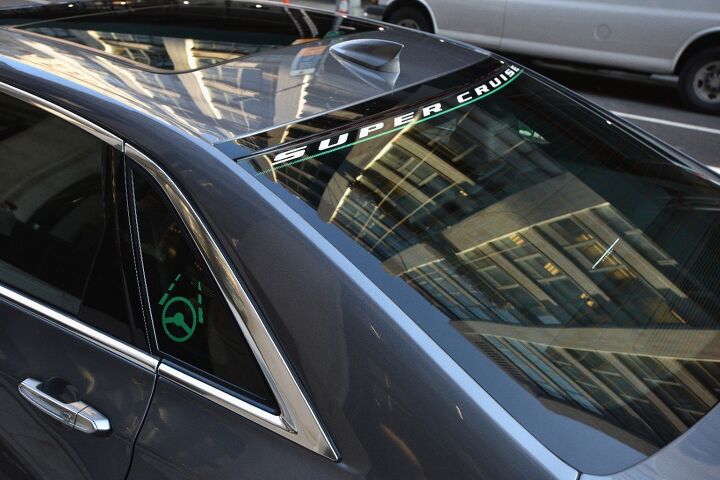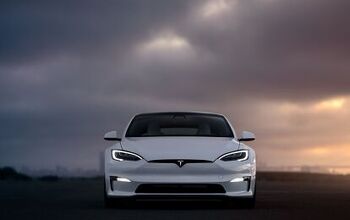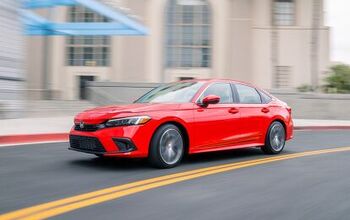Cadillac President Attributes 'Measured Approach' to Super Cruise Success, Gently Slams Tesla

Speaking at a conference in California on Wednesday, Cadillac President Johan de Nysschen threw some gentle shade at his rivals by stating General Motors’ measured approach to hands-free driving was the secret to Super Cruise being a winner. For those of you that don’t know, Cadillac claimed it became the first automaker to accomplish a coast-to-coast drive using hands-free technology last fall.
While it’s debatable whether the Super Cruise equipped CT6s making the journey actually achieved the feat without a driver ever having to touch the steering wheel, GM’s semi-autonomous system is among the best in the business right now — if not the best.
How did it manage the feat? For the most part, Cadillac built on the technology it already had to fine-tune adaptive cruise control to a point where the car could effectively steer itself on predictable highway jaunts. But de Nysschen says it mastered that in a closed environment, waiting until the system was completely ready. Meanwhile, other areas of General Motors have been devoted to total autonomy and perfecting the Cruise Automation fleet’s artificial intelligence systems.
“We believe that taking a measured approach is not only prudent and responsible but it can actually accelerate consumer acceptance,” de Nysschen explained, before mentioning “Tesla has been eager to flip the switch” on its Autopilot system and has placed much of the testing burden on its consumers.
“We believe that beta testing and validation belongs in a controlled environment supervised by expert engineers, and not in the hands of our customers.”
However, which strategy pays off in the long run is still unclear. The paralleled approach that saw GM engineers continuously improving Cadillac’s adaptive cruise control definitely helped create something special. But it’s not true autonomy, it’s just a better and more hands-off system than everything else that’s on the market. What Cadillac managed to do was carefully deliver the best product it could without rushing itself or over-promising.
Super Cruise was expected to debut on the CT6 flagship in 2016; instead, it was added to the sedan’s tech roster in late 2017.
Johan knows there is room for improvement, too. He said that, even though Cadillac tested Super Cruise over years of development using both simulations and on-road testing (at its proving grounds), the system’s handling of inclement weather could be bolstered. Super Cruise also doesn’t use LIDAR or any vehicle-to-vehicle communications. But those details may be left for the engineers at Cruise Automation, which tests on public roads just like everyone else, while Cadillac rests on its laurels a while.
In the meantime, Tesla will continue its work on Enhanced Autopilot as some of its “more daring” customers find their own ill-advised workarounds for a truly hands-free experience. Elon Musk says the brand will finally be able to demo its own nationwide road trip sometime within the next six months.
[Source: Automotive News] [Image: General Motors]

A staunch consumer advocate tracking industry trends and regulation. Before joining TTAC, Matt spent a decade working for marketing and research firms based in NYC. Clients included several of the world’s largest automakers, global tire brands, and aftermarket part suppliers. Dissatisfied with the corporate world and resentful of having to wear suits everyday, he pivoted to writing about cars. Since then, that man has become an ardent supporter of the right-to-repair movement, been interviewed on the auto industry by national radio broadcasts, driven more rental cars than anyone ever should, participated in amateur rallying events, and received the requisite minimum training as sanctioned by the SCCA. Handy with a wrench, Matt grew up surrounded by Detroit auto workers and managed to get a pizza delivery job before he was legally eligible. He later found himself driving box trucks through Manhattan, guaranteeing future sympathy for actual truckers. He continues to conduct research pertaining to the automotive sector as an independent contractor and has since moved back to his native Michigan, closer to where the cars are born. A contrarian, Matt claims to prefer understeer — stating that front and all-wheel drive vehicles cater best to his driving style.
More by Matt Posky
Latest Car Reviews
Read moreLatest Product Reviews
Read moreRecent Comments
- Jkross22 Nope. Too expensive, too little wear. Besides, there are so many great all seasons that are great to use that last longer, the use case for summer tires has gotten smaller.
- Redapple2 I love my geolander by yokohama. Wild Peak are almost as good.
- Redapple2 Why is a mexico BYD china car BAD -End of the World! But > gm < Buick Envision good (build more !) ?
- Kwik_Shift_Pro4X Supporting EVs is supporting Chi-nah.
- Eliyahu Oh, a nicer looking 2025 Camry!
































Comments
Join the conversation
"Cadillac President Attributes ‘Measured Approach’ to Super Cruise Success" No, they attributed the success to the measured approach. Or, they credited the measured approach with the success. Sorry, it was bugging me...
I wonder how many gravel roads the test cars took on their trip. And how would they do on a gravel road next to a precipitous drop-off on a foggy day, during a dusty windstorm or while it's snowing? I'm just waiting for the day when some practical joker repaints the lane lines on a small section of freeway to make all the artificial-intelligence cars take an exit or drive into a field (or worse).